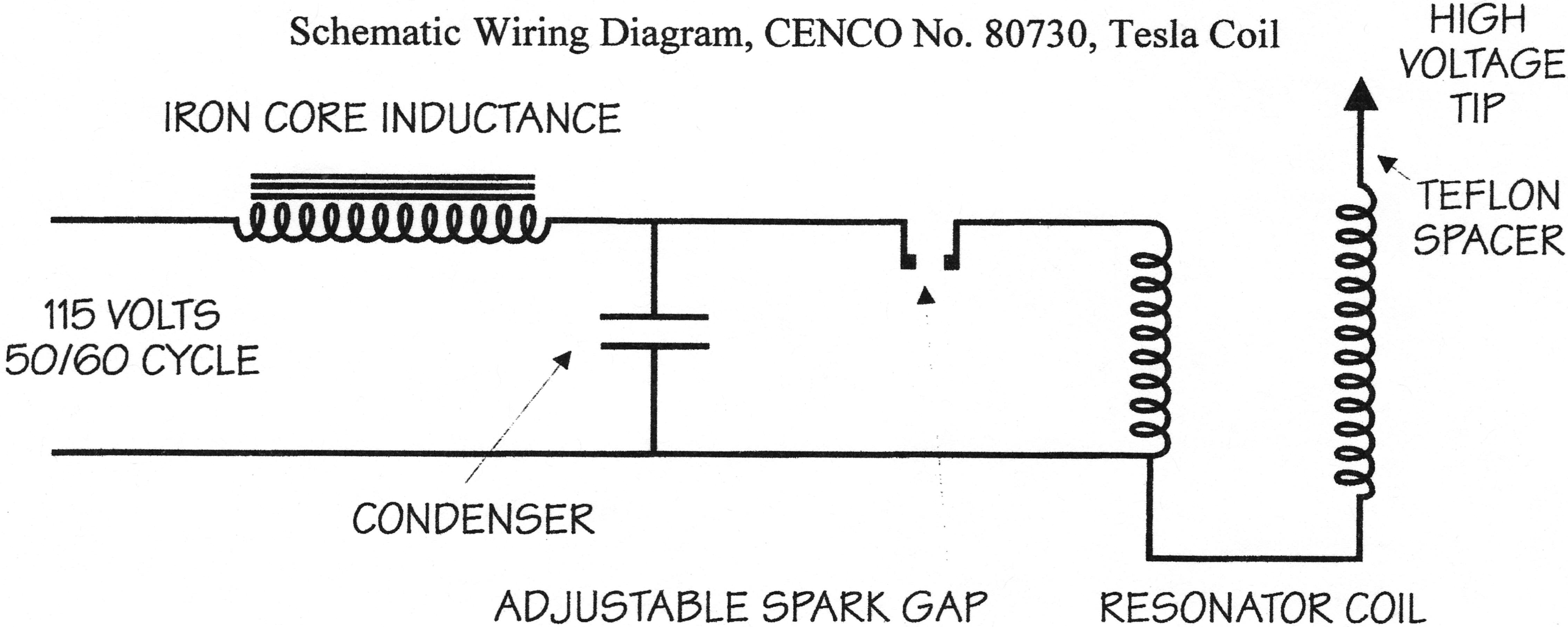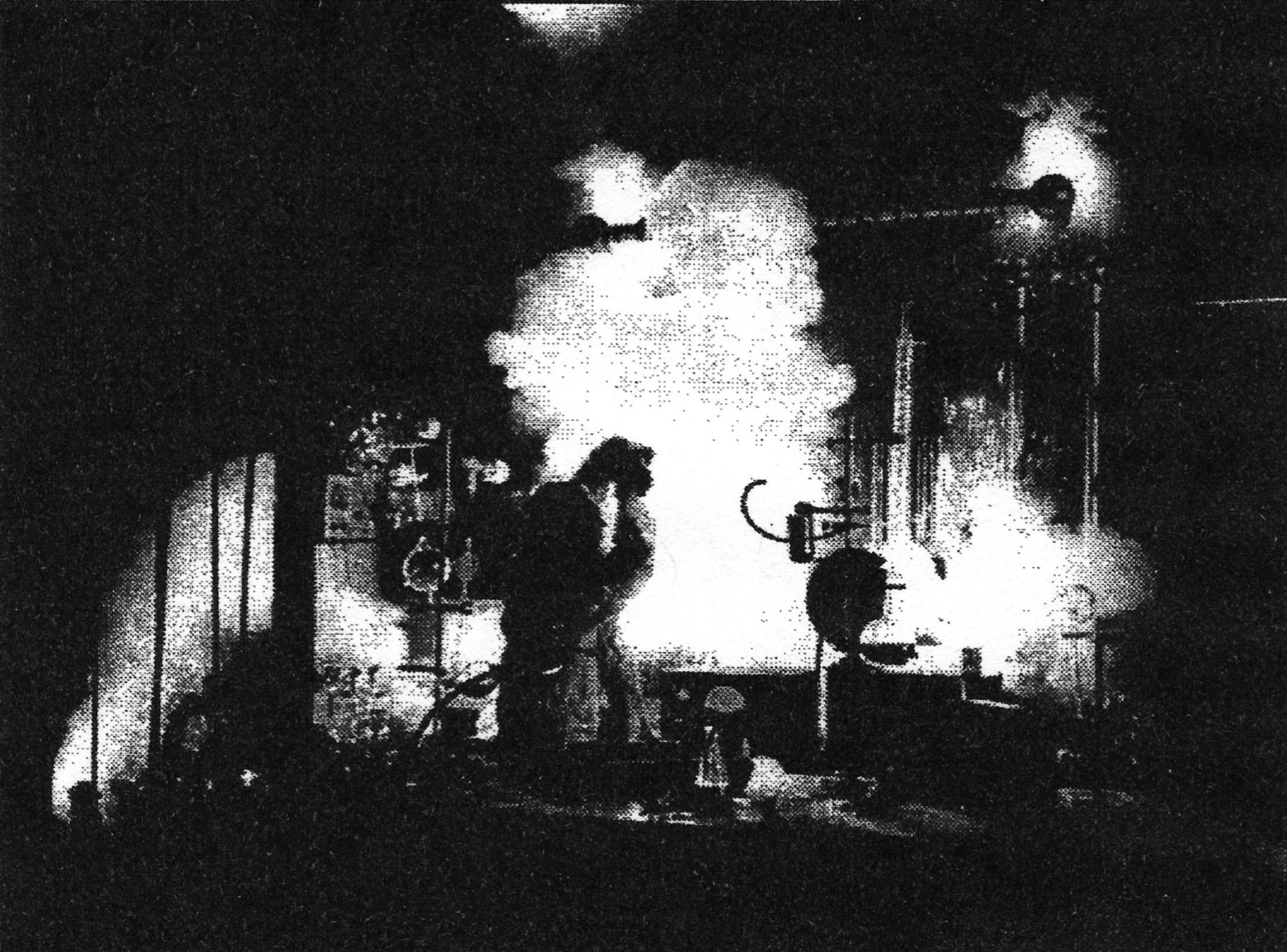Demonstrations with a Tesla Coil
January 01, 1997 Filed in:
Demo CornerRoland Meisel, Ridgeway Crystal Beach High School
rollym@iaw.on.ca
�Theory in a Nutshell
A Tesla coil circuit generally consists of some sort of step-up transformer along with a tuned oscillator. The B-10 coil sold by Cenco Scientific is a compact device which produces 40-50 kV at frequencies of 3-4 MHz. The schematic diagram shows an inductance connected to an AC circuit. As the AC goes through its cycle, the inductance builds up a high reverse potential (similar to the arcing at the commutator of an electric motor) which can exceed the breakdown resistance of the spark gap in the oscillator circuit. When this happens, the resistance across the gap drops effectively to zero, and causes the tuned circuit to “ring” electrically, much like hitting a tuning fork. A high-voltage high-frequency AC potential is induced at the tip. This is the “simple” explanation which high school students can usually follow. For those who wish to see the differential equations describing what is going on, may I suggest an advanced book on electrical physics!
 Demonstrations
Demonstrations
This Tesla coil is generally intended to be used to test for leaks in vacuum systems by causing a "glow" which can be seen by the naked eye. I use it in several places in the Grade 12 and OAC physics curricula. I have chosen three particular demonstrations to describe:
Radio Waves: The tip of the Tesla coil acts as a radio transmitter even if no spark discharge is being produced. To demonstrate this, I use an AM or a SW radio, and am able to show that there is radio frequency radiation coming from the coil. I then create a spark discharge, and demonstrate the large increase in signal. Morse code can be sent this way. With a portable radio, students can check on the range of the signal. If you do it outside, and a car is available, the range can be checked using the car radio and the odometer. I've gotten up to half a kilometre under good conditions.
Discharges: The radio waves can also be used to light up a fluorescent tube without a discharge. Just holding it near the tube produces noticeable light in a semi-darkened room. Of course, following this with an arc discharge to the light increases the light output considerably. Since we have a high-frequency AC output, no damage occurs to the person holding the light. Just to be safe, I usually pick someone with rubber soles, and caution him/her to stand away from desks, blackboards and especially water taps.
Different coloured discharges can be produced using the standard helium, hydrogen, mercury and other discharge tubes used in spectroscopy. I also like to use a neon lamp due to its bright colour. This leads to the “Uncle Fester” demonstration. A student is invited to hold the lamp in his/ her mouth, and it is lit using the coil.
Potential Difference: The Tesla coil can be used to place a potential on the filament of a lamp. This will cause arcing inside the bulb, and since most bulbs are filled with argon, beautiful streamers are produced. Placing fingers at ground potential on the glass will attract stronger streamers which will follow the fingers around. I like to use one of the “Fat Albert” bulbs available at lighting stores.
Cautionary Notes
- Since we are using high-frequency AC, current does not flow through the subject, but mainly back and forth in the arc. Arcing should always be done to metal or another conductor, rather than bare skin. Arcing to bare skin may cause radio-frequency burns. Most receivers of the arc report a mild tingling, indicating that a surface current is penetrating a little way away from the point of arc.
- The B-10 coil is isolated from the 60 Hz AC line with a teflon spacer, so there is no danger of direct electrical shock. Without this spacer, danger of shock exists. It is best to insulate the subject anyway.
- Like most electrical demonstrations, an untrained demonstrator can find ways to make it dangerous. It is not recommended for those without some background in electricity and electronics.

Column Editor: Ernie McFarland, Physics Department, University of Guelph, Guelph, Ontario, N1G 2W1 Tags: Electricity



